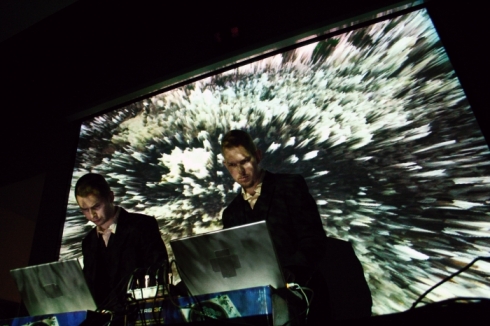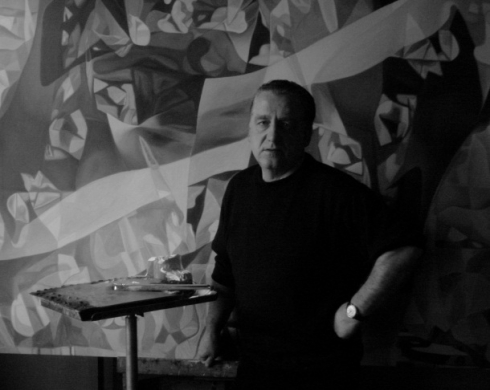The Sixth Cyberfest, the largest annual international festival of cybernetic art in Eastern Europe, is taking place in St. Petersburg. Cyberart is a cunning blend of living substance with technical, computer components. “Are there no more artists, in the conventional sense of the word, working with brushes and paints, and are they gradually being replaced by programmers and electricians?” pondered the “VP” correspondent. Ivan Govorkov, a professor at the Academy of Arts, shared his thoughts about art and culture.

One would think that a representative of the world of classical art would be quite skeptical about all these cyber gimmicks. Not at all…
– Should “new artists” adhere to any bounds of decency?
– It’s all about upbringing. You had good parents who didn’t swear, so you don’t swear. And most likely, everything’s normal with your genetics, and you love women, not men. So, you would appreciate Rubens’ paintings, which men couldn’t look at without some intimate excitement when they first appeared, but at the same time, someone managed to shout the cherished: “Shame and disgrace!” The same goes for the stunningly beautiful album of drawings by the Carracci brothers, each page permeated with delightful eroticism. And yet it too was surely called indecent, perhaps even obscene! But now the moral guardians have nothing to worry about: only a handful of artists and those interested in their work gather for the sixth time.
– About decency I understood… But the image on Liteyny Bridge was also called art, and they gave it a prize. To me, it’s vandalism…
– You know, every artistic form has its language. What you’re talking about is also art, but so politicized that I have nothing to say about it, as its language is often aimed at destruction rather than creation, at creating noise. Although, maybe someone sees a masterpiece in it. But the price of such self-expression is five years in prison. And you know what struck me? Many political artists are ready – just happy – to go to jail! Why not? It’s profitable for them now: immediate fame, universal attention, the whole world will talk about them, and they don’t have to work hard.
– Will contemporary art forms prevail over classical ones?
– Have you been to the forest? Surely you have. And picked mushrooms there. And you know, there are summers when not a single boletus. And then one grows. Does it prevail over the other mushrooms? Does aspen take over the other trees in a mixed forest? I think you understand me: contemporary art, with all its bells and whistles, is just one of the trees, just one of the manifestations of the human spirit.

– So why such panic: “new art will destroy the old, art has turned into a fashionable commodity…”?
– Don’t listen to those who say that. People are used to clinging to the world they once knew. Many factors have intertwined, life has developed in such a way that the past holds them. Although, as I see it, fear of competition, the feeling that new artists will soon take over their markets, is at the forefront here. As always, the saying “fear has large eyes” works here. Media art is a completely different beast! Compared to it, classical painting doesn’t require any expenditure from the artist. All these stands, installations in media art are extremely complex, expensive, and practically unsellable: think about it, who would buy them, where would they put them?! But it does manage to convey emotions directly.
Interested in realism? Welcome to the Academy of Arts, where teaching methods are quite orthodox. It’s full of students, parents send their children in droves. However, the danger, in my opinion, is precisely for easel painters: they don’t think about what they’ll do to earn their bread after graduation! Those who go into graphics and restoration have a chance of employment. But what to do with easel painters… He graduated and is supposed to express the “pain of the soul” on canvas. Accordingly, an employer organization is needed. In the past, during the Soviet Union, the artist’s “pain of the soul” easily coincided with the ideology of the party. A multitude of artists painted such paintings, and museums, state institutions bought them. Even submarines bought paintings – small landscapes of the middle zone! But now I highly doubt that our submarines order “soul-saving canvases” from the St. Petersburg art combine!
Where and whom to work for – that’s the question for graduates. Yes, there are autumn “review” exhibitions, spring ones, but there are a lot of people there, a terrible mishmash, nothing is clear.
– So what about “ordinary” artists?
– With the advent of the new Russians and the increase in the number of wealthy citizens, they found support: family portraits, decorating luxurious apartments, and so on. In fact, it’s good money.
– So what’s the key to mutual understanding between orthodox and contemporary art?
– You can’t see each other as competitors! There’s enough room for everyone, no one will steal anyone’s chair.
Author: Alexey Blakhnov
vppress.ru
